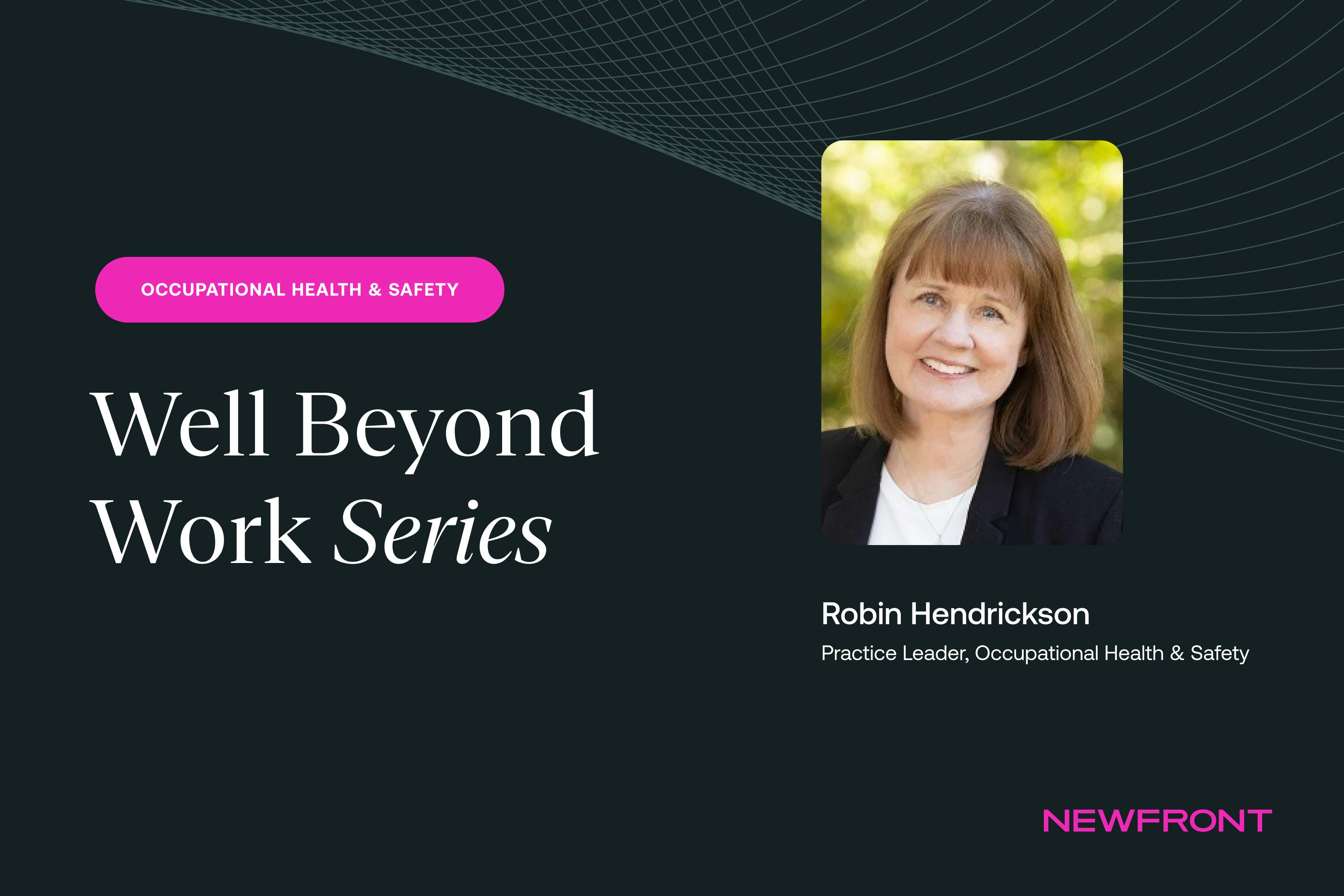Well Beyond Work: Building empathy into the workers' compensation claims system
By Robin Hendrickson | Published August 16, 2023

Shifting the focus of the wild and wacky world of Workers’ Compensation claims to a more positive experience for everyone
During my tenure working with employers on their risk management programs, I have observed the claims experience from several perspectives. I’ve seen firsthand that someone injured or who becomes ill on the job can often have quite a different and sometimes unpleasant experience versus a person who undergoes the same type of injury or illness off the job.
Over the years I have recognized what drives the differences between various benefit plans. I have listened to employers, employees, and medical providers who have shared personal stories of their “journeys” in the world of Workers’ Compensation (WC). What I learned is there are a few key indicators of why claims impacting one’s personal health and wellbeing may sometimes be treated differently depending on the plan covering a claim.
Some of the challenges of WC shared by employers, employees, and medical providers include:
Navigating the WC system can be confusing and taxing. Staying up to date with each state’s dynamic jurisdictional workers’ compensation regulatory, and legislative rules and regulations, is not an easy task.
Reporting a work-related injury and initiating the claims process typically starts with inquisitive type of questions led by the claims administrator conducting an “investigation” to determine compensability of the claim; did the incident arise out of employment (AOE) and occur in the course of employment (COE)? Were there any witnesses? Was the incident immediately reported to a supervisor or manager?
Employees may feel mystified on how the WC claims process works and the requirements set by the state, the claims administrator, or the employer. There are several challenges navigating the required claims forms and obtaining medical care from an occupational medical clinic versus a family physician. Employees are often awaiting approval following the claims administrator’s utilization review process, and established protocols may delay getting treatment for an injury and appear daunting to someone unfamiliar with the WC process.
Employees can feel isolated when there is a lack of communication from the employer and from colleagues after reporting a work injury versus an employee who suffers a non-work-related injury or illness when they typically receive well wishes and phone calls inquiring about their health.
An employee who files a WC claim is often referred to as a claimant or injured worker in the claims system. Employees may perceive these stereotype descriptions as non-personal and their simply being treated as a “case”.
WC claims forms given to an employee hurt on the job can have language that is foreign to them, making it difficult to fully comprehend as the wording has a unique and intimidating legal tone. This may encourage the employee to seek legal representation.
Occupational Medical Providers can feel overwhelmed with the number of WC cases and adherence to each claim administrators’ documentation and workflow requirements, including submitting timely and up to date physician progress reports, determination of return-to-work status, and permanent and stationary status reports. They can often experience frustration over submitting requests for medical treatment being delayed or denied by the claims administrator and bills being subject to state mandated fee schedules.
Are there ways that might reduce these challenges and afford a better experience and outcome for the injured employee, employer, and medical providers?
The Art and Benefits of Empathic Communication
Parties engaged with a WC claim will recognize and adopt the importance of being empathic to a person who has suffered a work injury. This tends towards a more positive journey in the workers’ compensation system.
Basic characteristics of being empathic from the time an employee is hurt on the job and over the duration of recovery include purposeful communications, both verbally and in writing recognized by the employee as genuine, sympathetic, and supportive.
Here are a few ideas on establishing a heightened degree of empathy throughout the path to recovery from each participant’s perspective:
From the employer:
When the injury needs to be treated as an emergency. The employer reacts immediately with appropriate medical care needed, notifying the medical facility and family members or emergency contacts with thoughtful words of concern and support, followed by ongoing communication with the family and employee on his or her overall wellbeing.
When the injury is not severe. The employer takes the time to listen and talk with the employee in a sympathetic tone, understanding the nature of the incident and any pain they are experiencing. The employer thoroughly explains the multifaceted WC claims process expressed in a manner that is clear and understood by the employee and offers help and support with questions or concerns the employee has.
From the Occupational Medical Provider:
If medical care is needed, the employee should be directed to an occupational medical provider that has been vetted to ensure they provide the expected level of quality medical treatment in treating the employee as their patient. The provider should reinforce the importance of communicating the progression of the treatment plan and road to recovery to the patient and employer. If underlying health conditions are impeding the recovery of the work-related injury, the provider can educate their patient on ways to manage their overall health and wellbeing.
From claims administrators:
Claims administrators can consider themselves advocates and attentive listeners, reassuring the patient throughout the life of the claim. The administrators should consider the importance of a person’s overall wellbeing and have the ability to detect any underlying issues that may slow the recovery from the work-related injury. They will work closely with the medical providers and employer’s additional benefits the patient could receive such as employee assistance programs, ergonomic resources, and wellness programs.
In summary, whether a person is hurt on the job or off the job, being treated with empathy by employers, medical providers, and claims administrators may influence a person’s perception of their experience as positive or negative and impact the outcome for the employer and patient.

Robin Hendrickson
As Newfront’s Occupational Health & Safety practice leader, Robin leads a team of experienced workers’ compensation claims management, wellness initiative, and loss mitigation and strategy consultants. Robin, and her team, work with employers to reduce occupational risk exposures, implementing best practices to control claim costs, and keeping employees safe, healthy, and productive.


